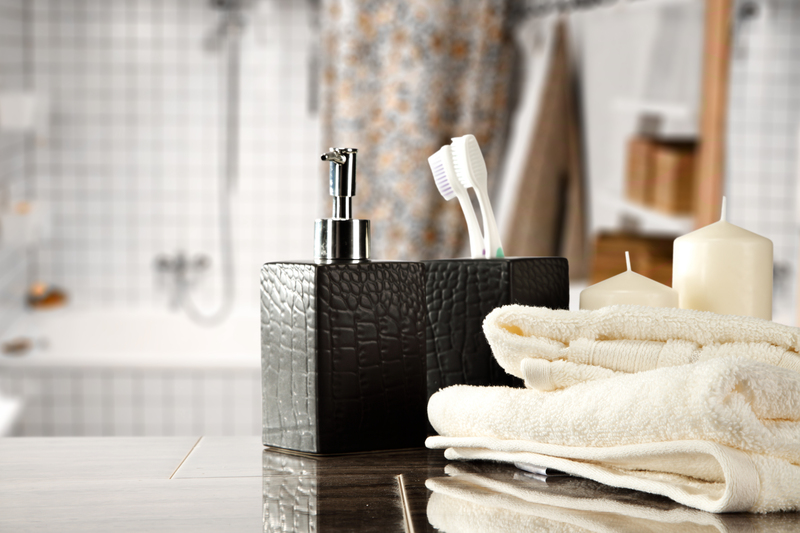Navigate Your Move with Effective Home Packing Guidance
Posted on 20/05/2025
Navigate Your Move with Effective Home Packing Guidance
Whether you are relocating across the street or across the country, moving to a new home can feel overwhelming. The process doesn't have to be stressful! By following effective home packing guidance, you can plan a smooth, stress-free move that keeps your valuables protected and your sanity intact. In this comprehensive article, we'll walk you through every step of the packing process to help you navigate your move like a pro.

Why Is Strategic Home Packing Essential?
Strategic home packing is the cornerstone of a successful move. It ensures everything you own is protected, organized, and easy to transport. Inadequate packing is the root cause of many moving headaches. By investing time in structured packing preparation, you'll save yourself time, energy, and money on moving day.
Key Benefits of a Well-Planned Packing Approach:
- Prevents damage: Correct packing materials and methods keep your belongings secure.
- Saves money: Reduces the risk of losses and lowers packing supply costs by avoiding waste.
- Reduces stress: An organized plan helps you keep track of everything you own.
- Streamlines unpacking: Clearly labeled boxes help you settle into your new place faster.
Essential Steps to Prepare For Packing
1. Create a Detailed Packing Plan
Start early! The earlier you begin planning, the smoother your move will go. Make a checklist of every room in your house and outline a timeline for when each area will be packed. This ensures you avoid last-minute chaos.
- Gather supplies: Collect sturdy boxes, packing tape, bubble wrap, packing paper, markers, scissors, and labels.
- Enlist help: Ask friends or family members well in advance if you'll need their support during packing or moving day.
- Hire professionals, if needed: For valuable, fragile, or large items, consider hiring experienced movers who offer specialized house packing services.
2. Declutter Your Belongings
Before you pack, purge. Go through your belongings and set aside items you no longer need. Donate, sell, recycle, or throw away anything you won't use in your new home. Decluttering reduces moving costs and effort.
- Use the 12-month rule: If you haven't used something in a year, it's probably safe to part ways.
- Organize items by type: Separate belongings into categories--keep, donate, sell, toss--to streamline decision-making.
Gathering the Right Packing Supplies
Quality packing materials are an investment in your stress-free move. Here are recommendations for packing supply essentials for a successful house move:
- Small, medium, and large boxes: Small boxes are great for books or heavier items. Medium boxes for kitchenware. Large boxes for bedding or clothing.
- Specialty boxes: Dish packs, wardrobe boxes, mattress bags, and TV boxes provide extra protection.
- Bubble wrap and packing paper: Cushion breakables such as glassware, electronics, and decor.
- Strong tape and dispensers: High-quality packing tape prevents box bottoms from rupturing and keeps your items safe.
- Labels and markers: Clearly label every box and add details about contents and destination.
- Plastic bags: Use for screws, bolts, or parts from dismantled furniture--tape the bag to the relevant item for easy reassembly.
Packing Guidance For Every Room
Kitchen Packing Tips
- Pack dishes vertically: Like records, plates travel safest on their sides wrapped in bubble wrap or packing paper.
- Bundle utensils: Tie cutlery sets together and wrap them in a towel or paper for instant organization.
- Use original packaging: For appliances and gadgets, original boxes offer the best protection if available.
- Empty and clean appliances: Defrost and wipe out refrigerators, freezers, and microwaves before packing.
Living Room and Bedroom Packing Guide
- Disassemble large furniture: Remove legs from tables, take apart bed frames, and keep all fasteners in labeled bags.
- Protect soft surfaces: Cover mattresses with plastic covers; wrap chairs and sofas in stretch wrap to prevent dirt and damage.
- Pack clothing efficiently: Transport hanging clothing directly in wardrobe boxes to avoid wrinkling and speed up unpacking.
- Shield electronics: Secure TVs and computers in padded boxes. Store cables and remotes in labeled zip bags.
Bathroom and Laundry Room Packing Advice
- Seal liquids tightly: Tape bottle caps, then place in zipper bags to contain leaks.
- Use small boxes: Heavy items like detergents or bath products can make boxes unmanageable if overpacked.
- First-Night Box: Pack toiletries, medications, towels, and essentials in a clearly marked box that you'll access immediately after moving.
Garage and Outdoor Items
- Check restrictions: Many movers won't transport hazardous substances--dispose of paints, propane, or chemicals safely and legally.
- Bundle long items: Tape rakes, brooms, and shovels together for simple carrying.
- Drain all equipment: Remove gas or oil from mowers and trimmers before moving.
Room-By-Room Packing Checklist
Stay organized by breaking down packing into manageable tasks. Here's a room-by-room checklist for effective house packing:
- Living room: Electronics, books, decor, lamps, and fragile items securely wrapped.
- Bedrooms: Clothing, bedding, shoes, small decor, and personal items.
- Kitchen: Dishes, pots, pans, utensils, small appliances, food items (non-perishable).
- Bathrooms: Toiletries, towels, medicine, cleaning supplies (ensure properly sealed).
- Garage/outdoors: Tools, sports equipment, seasonal items, garden tools.
- Miscellaneous: Important documents, jewelry, valuables (move personally).
Packing Tips to Protect Your Belongings
General Packing Tactics
- Heaviest items on the bottom: Start packing with weightier objects at the base, lighter ones on top.
- Don't leave empty spaces: Fill gaps with soft items like towels or packing paper to prevent shifting.
- Label every box: Use large, clear labels specifying the box's destination room and contents. Mark boxes with breakables as "FRAGILE".
- Limit box weight: Aim for no more than 50 pounds per box to ensure easy lifting.
Pro Packing Guidance for Moving Homes
-
Color-code system:
- Assign each room a color and mark all boxes with that color for fast, organized unloading while moving house.
-
Take photos:
- Before disassembling electronics or furniture, snap photos for a visual guide during reassembly.
-
Keep an inventory:
- Number each box and list its contents. This helps you keep track of your belongings and makes claims easier if anything is lost.
-
Prepare an essentials box:
- Pack a suitcase or box with a few days' worth of clothing, toiletries, important documents, chargers, medicine, and snacks.
Common Packing Mistakes--and How to Avoid Them
- Procrastination: Start packing at least four weeks before your move to avoid last-minute stress.
- Overpacking boxes: Avoid heavy, unmanageable boxes that could break or injure movers.
- Poor labeling: Take the time to write clearly and add more detail so nothing gets lost.
- Skipping boxes for bins or bags: Regular boxes stack better and protect contents better than bags or totes.
- Neglecting valuable document safety: Always move items like passports, birth certificates, and jewelry in your personal vehicle, never in moving trucks.
When to Hire Professional Packing Services
If your schedule doesn't allow for self-packing or you have high-value items, hiring professional home packing services is a smart move. Experts are trained to pack everything from fine china to grand pianos, ensuring your valuables arrive safely. Many movers offer full-service packing or partial packing options tailored to your needs and budget.
Benefits of Professional Packers:
- Speed and efficiency: Professionals pack quickly, saving you time during a hectic moving period.
- Expertise: Movers use proven packing methods to minimize risk of breakage.
- Insurance: Moving companies often offer liability coverage for items packed by their staff, giving you peace of mind.

Unpacking and Settling into Your New Home
Don't let the chaos of moving in undo your packing efforts. When you arrive at your new home, start by placing boxes in the correct rooms according to their labels. Unpack your essentials box first to make your first night comfortable.
- Unpack room by room: Focus on the kitchen and bathroom first so you can prepare meals and freshen up.
- Assemble furniture early: Set up beds as soon as possible for a good night's rest.
- Recycle packing supplies: Offer used boxes to other movers, recycle, or use for future storage.
Conclusion: Move with Confidence Using Proven Home Packing Guidance
Relocating doesn't have to be an ordeal. With careful planning, quality supplies, and these expert tips for effective home packing, you can ensure the transition to your new residence is as easy as possible. Remember to stay organized, label diligently, and ask for help when you need it. Your moving experience will be a success--every time!
For more moving resources, check out our additional guides on stress-free moving, how to pack fragile items, and how to choose the right moving company.
